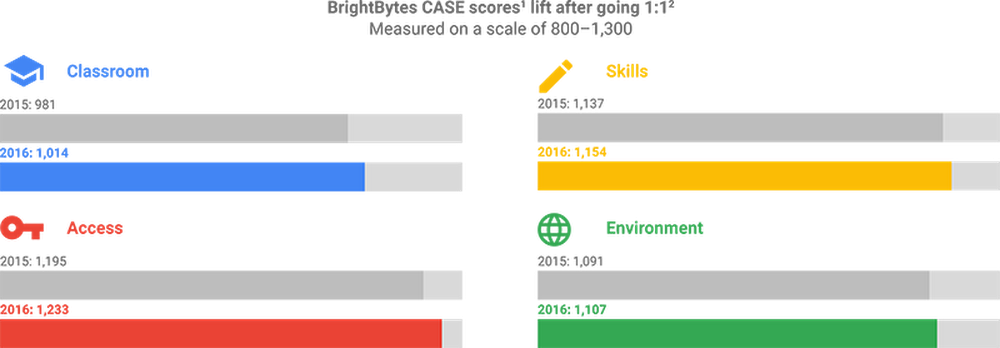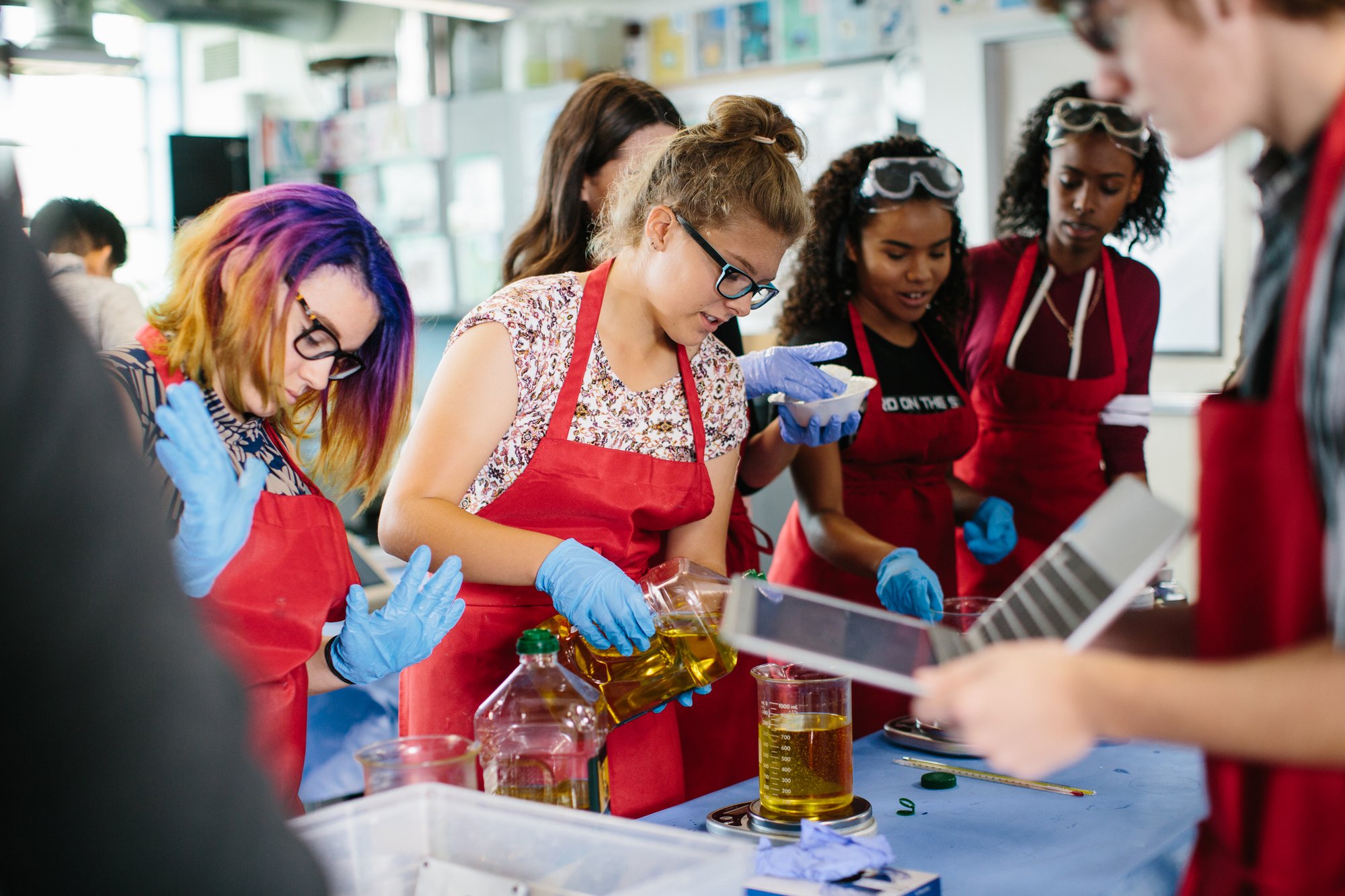Editor’s Note: Earlier this week at ISTE, we announced new tools to support our future explorers and digital citizens, and we released seven new Impact Portraits profiling the impact of Google for Education and Chromebooks in districts across the US. Today we’ll dive deeper into the findings from these schools. For more information from ISTE, follow our updates on Twitter, and if you’re in San Antonio, visit us at booth #1718 to learn more and demo these new tools for yourself.
In 2016, we worked with Evergreen Education Group answer a big and pressing question: Can we measure the impact of Chromebooks and G Suite for Education in schools? Evergreen’s discussions over 16 months with more than 100 school leaders from 6 countries was captured in a series of Impact Portraits—data-rich case studies with real school results. Their research uncovered four key factors that help schools and students flourish when adopting technology for the classroom: planning, professional learning, patience and support.
Today we take a closer look at the findings in seven new Impact Portraits from school districts across the U.S. These districts range in size and demographics from Florida’s Brevard County, with a student population of 73,000 and 9,000 educators, to New York State’s Amherst Central, which has 4 K-12 schools, 2,944 students, and 263 educators.
The one thing these schools have in common: They're using Chromebooks and G Suite to drive measurable improvements in everything from reading skills to AP diploma graduation rates. Below are some key results from each school district.
Achieving a one-to-one environment for so many students changed everything. We now live and breathe the new approach every day.Chris Reed Principal at Williams Elementary, FL
- The Metropolitan School District of Wayne Township, Indiana, deployed Chromebooks and G Suite for Education in fall 2014. Since then, Wayne Township’s scores on IREAD-3, Indiana’s measure of third-grade reading skills, have risen by 10% to 86%. High school graduation rates also rose 21.1%, from 67% to an average of 88.1%.

- After giving every student a Chromebook, STEAM (Science, Technology, Engineering, Art, and Mathematics) Middle School of Choice, part of the Burleson Independent School District, Texas, surpassed every middle school in the district on the State of Texas Assessments of Academic Readiness and the BrightBytes’ CASE Technology Framework, which measures the impact of technology on learning outcomes. Engagement is high as well: One English teacher reported a 72% decrease in missed homework assignments after Chromebooks were introduced to her classroom.
- In Brevard County Public Schools, Florida, Quest Elementary added 120 Chromebooks in 2014. Since then, the percentage of students scoring proficient or above in English/Language arts rose from 81% to 85% and students scoring proficient or above in math rose from 86% to 89%. Brevard’s West Shore Senior High School leveraged Chromebooks and G Suite for students seeking the new Advanced Placement (AP) Capstone Project diploma in 2016, which requires intensive research and collaboration. The first year the AP Capstone diploma was offered, 60 out of 160 graduating West Shore students received the prestigious diploma.

- In 2013, Hoover City Schools, Alabama, in the Birmingham suburbs, gave students Chromebooks for classroom and home use. Students now have access to Chromebooks and G Suite wherever they go do. For absent students, Hoover City created a virtual high school with online video lessons; the schools also introduced an Engaged Learning Facilitators (ELF) program, offering extra technology training to interested teachers who then coach and support other educators in the district.
- The Oak Hills Local School District, Ohio saved more than $100,000 a year in software license and server fees by adopting G Suite in 2009. Based on these benefits, the district gave Chromebooks to every student in its three middle schools over the next three years. By the 2016–17 school year, every student in grades 1–12 had their own Chromebook. Chromebooks cost 26% less than similar devices and also help prepare students for Ohio’s state testing, which is conducted online.

- The Amherst Central School District, New York adopted G Suite in 2010, and, after positive reception to Google’s educational technology, in 2012, the district began using Chromebooks. Today, students use Google Slides to create digital portfolios and take virtual field trips with Google Expeditions. Google technology has proved so transformative in the district that the device-to-student ratio in Amherst schools is now approaching 1:1.
- In 2015, Lee’s Summit R-7 School District, Missouri gave a Chromebook to 17,500 students from grade K-12 through the G Suite Connect2Learn program. Students can use their Chromebooks at school and at home (or wherever a WiFi hotspot is available), increasing their learning opportunities throughout the week. A year later, the district’s BrightBytes CASE scores had risen across all four measures of the test: Classroom (up 3.4%), Access (up 3.2%), Skills (up 1.5%), and Environment (up 1.5%).

To read more stories like these, visit our Impact Portraits page at g.co/EduImpact and stay tuned here for our next post on Impact Portraits from Europe. For ideas on how to bring technology into your school district, visit Google for Education’s Transformation Center. And follow @GoogleForEdu on Twitter to see all that's launching at ISTE.




